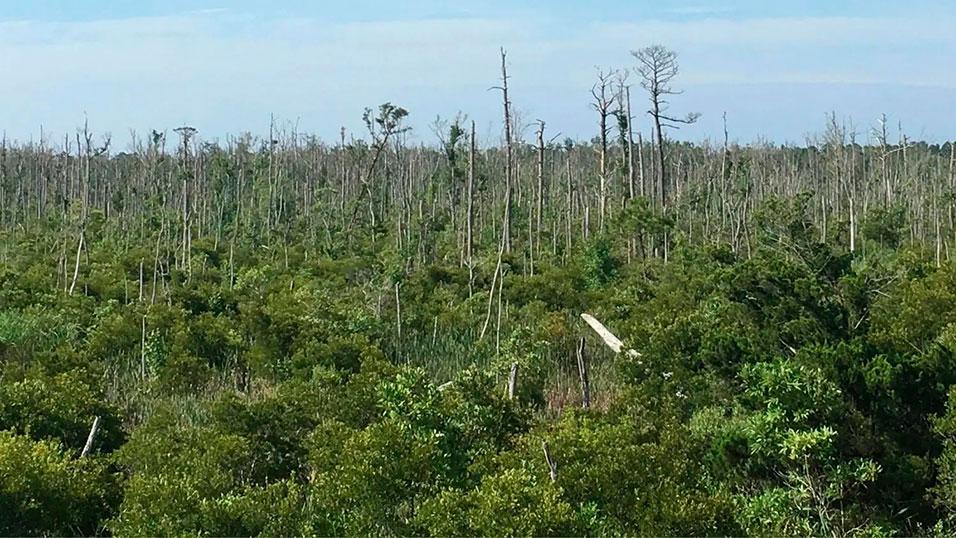RALEIGH, NC.- A new study from
North Carolina State University finds that greenhouse gas (GHG) emissions from standing dead trees in coastal wetland forests – colloquially called “tree farts” – need to be accounted for when assessing the environmental impact of so-called “ghost forests.”
In the study, researchers compared the quantity and type of GHG emissions from dead tree snags to emissions from the soil. While snags did not release as much as the soils, they did increase GHG emissions of the overall ecosystem by about 25 percent. Researchers say the findings show snags are important for understanding the total environmental impact of the spread of dead trees in coastal wetlands, known as ghost forests, on GHG emissions.
“Even though these standing dead trees are not emitting as much as the soils, they’re still emitting something, and they definitely need to be accounted for,” said the study’s lead author Melinda Martinez, a graduate student in forestry and environmental resources at NC State. “Even the smallest fart counts.”
In the study, researchers measured emissions of carbon dioxide, methane and nitrous oxide from dead pine and bald cypress snags in five ghost forests on the Albemarle-Pamlico Peninsula in North Carolina, where researchers have been tracking the spread of ghost forests due to sea-level rise.
“The transition from forest to marsh from these disturbances is happening quickly, and it’s leaving behind many dead trees,” Martinez said. “We expect these ghost forests will continue to expand as the climate changes.”
Using portable gas analyzers, researchers measured gases emitted by snags and from soils in each forest in 2018 and 2019. Overall average emissions from soils were approximately four times higher than average emissions from snags in both years. And while snags did not contribute as much as soils, researchers said they do contribute significantly to emissions.
In addition to finding that soils emit more GHGs than snags, the work lays the foundation for the researchers’ ongoing work to understand the role snags are playing in emissions – whether they prevent emissions, like corks, or release them like straws. That is an area of future research they’re currently continuing to explore.
“We started off this research wondering: Are these snags straws or corks?” said study co-author Marcelo Ardón, associate professor of forestry and environmental sciences at NC State. “Are they facilitating the release from soils, or are they keeping the gases in? We think that they act as straws, but as a filtered straw. They change those gases, as the gases move through the snags.”
The study, “Drivers of Greenhouse Gas Emissions from Standing Dead Trees in Ghost Forests,” was published online in Biogeochemistry on May 10, 2021. Funding was provided by the National Science Foundation under grant DEB1713592 and a 2019 North Carolina Sea Grant/SpaceGrant Fellowship.










